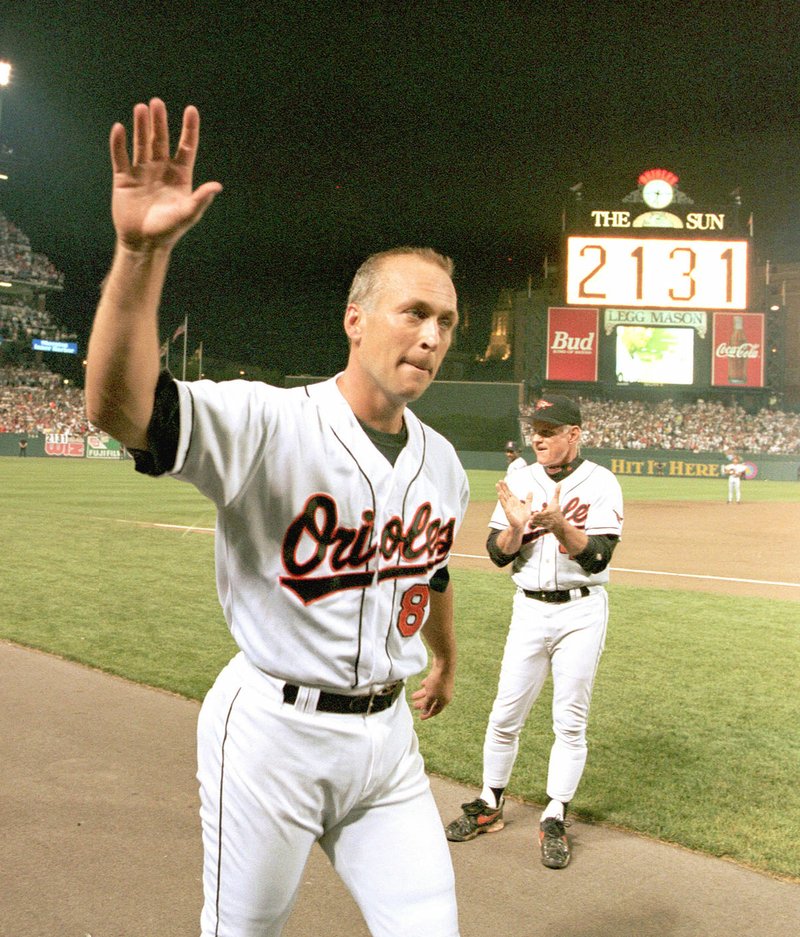BRANSON, Mo. -- Jalen Beeks could have benefited from a shortstop like Cal Ripken Jr. when making his major league debut on the mound for Boston against Detroit Thursday.
The 24-year-old Beeks, a 2011 Prairie Grove graduate, threw 4 innings for the Red Sox, allowing 6 runs in Thursday's 7-2 loss to the Detroit Tigers. Beeks started well, fanning the first man he faced; but got into trouble in the first inning while throwing primarily fastballs.
One of the obstacles Beeks dealt with while allowing 4 hits and 5 runs in the first inning was a lack of familiarity with Red Sox catcher, Blake Swihart, a utility player listed on the roster as an outfielder. While Swihart has played other positions in pro games, he was making his major league debut as a catcher Thursday.
Speaking at a fundraising event for the Boys and Girls Club of the Ozarks at the Branson Convention Center Nov. 12, 2015, Ripken recalled a brief stint calling pitches for the catcher from the shortstop position.
"For awhile I gave the sign to the catcher and the catcher gave it to the batter," Ripken said.
The Orioles faced a situation similar to what Beeks and Boston were looking at Thursday starting a talented yet inexperienced pitcher and catcher.
"Ben McDonald, out of LSU, the No. 1 pick overall, was our pitcher," Ripken said. "He got to the big leagues early and he didn't know how to set batters up."
McDonald was capable. He led the 1988 U.S. Olympic Team to a gold medal for baseball, winning complete games against host South Korea and Puerto Rico. Following his best collegiate season in 1989, in which he posted a 14-4 record, and 3.49 ERA, along with an SEC record 202 strikeouts, the Orioles made McDonald the first overall selection in the June, 1989, draft.
McDonald signed with the Orioles Aug. 19, 1989, and on Sept. 6, 1989, made his major league debut. McDonald was inserted into the Orioles' starting rotation in 1990.
Adding to the dilemma Ripken described was the youthfulness of Baltimore catcher Chris Hoiles, who made his major league debut with the Orioles on April 25, 1989, as a 24-year-old. He spent most of his first two seasons with the Orioles in the minor leagues with the Rochester Red Wings. Hoiles appeared in only 6 major league games with the Orioles in his first season and 23 the next year in 1990.
"We had a young catcher (Hoiles), the bases were loaded, it was a big moment in the game and we don't know what to do," Ripken said.
Realizing the predicament, Ripken intervened, going out to the mound. The future baseball hall-of-famer told McDonald to throw a curve ball, which became strike one. At that juncture, McDonald looked to Ripken for guidance and Ripken, by now an 8-year veteran with the Orioles provided mentorship to get through the at-bat and out-of-the-inning.
McDonald called Ripken out to the mound and asked what to throw. Ripken instructed McDonald to throw another curve ball, which brought up strike two.
Satisfied with the results of an 0-2 count, but still looking for an out, McDonald again summoned Ripken out to the mound asking what should he throw next.
"Throw a 100-mile-per-hour fastball inside and we'll strike him out," Ripken said.
The fastball worked exactly as Ripken predicted with the Orioles getting out of a jam.
Speaking to the crowd at Branson in 2015, Ripken said he realized right then and there, "Hey, I can call pitches. I know what to do," and ever the consummate teammate -- he began to expand his game.
McDonald's confidence fastened on Ripken and a pattern soon developed.
"He didn't talk to Chris Hoilies," Ripken said. "He started calling me into the mound so many times I said, 'I can't keep doing this.'"
Ripken developed signs he gave from shortstop so he wouldn't have to go out to the mound and the unorthodox tactic helped the Orioles consistently win in spite of the lack of experience at catcher and on the mound.
"Nobody is looking at the shortstop to give those signs," Ripken said. "Ben McDonald started getting on a roll. He became so dependent upon me that for a while I started calling every single pitch for every single pitcher and we started winning."
In his first major league start on July 21, 1990, McDonald threw a complete game shutout against the Chicago White Sox. Bolstered by Ripken's pitch-calling, McDonald finished eighth in Rookie-of-the-Year voting, with the award going to catcher Sandy Alomar, Jr.
McDonald was active until 1997. He finished his career with a 78--70 record, 894 strikeouts, and a 3.91 ERA in nearly 1,300 innings pitched.
Hoiles, too, benefited from Ripken's expertise. With the pressure of calling pitches temporarily lifted, he grew into the position. Hoiles played catcher for the Orioles from 1989 to 1998. Although shortened by injuries, his career was productive as one of the best all-around catchers in Major League Baseball.
Hoiles maintained a career .262 batting average with 739 hits in 2,820 at-bats, 415 runs scored, 449 RBIs and 151 home runs.
Sports on 06/13/2018
